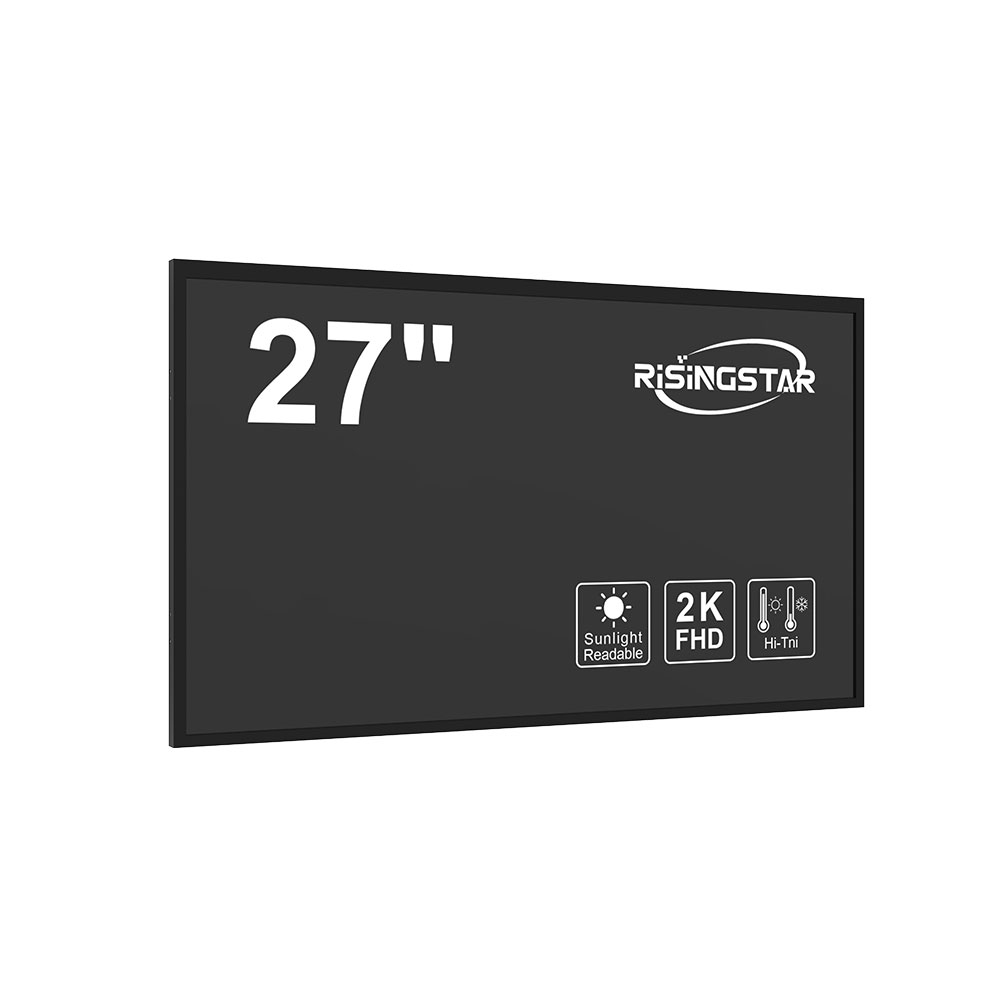Outdoor LCD screens have become essential tools for businesses across industries—from retail and hospitality to transportation and public safety. Whether you're displaying real-time promotions, digital signage in urban environments, or critical operational data at a construction site, selecting the right outdoor LCD screen requires deep technical understanding and strategic planning. This article dives into key specifications, environmental considerations, installation best practices, and real-world case studies to help you make an informed decision.
First, let’s define what makes an LCD screen “outdoor-ready.” Unlike indoor displays, outdoor LCDs must withstand extreme temperatures, humidity, rain, UV exposure, and even physical impacts such as vandalism or accidental collisions. Industry standards like IP65 (dustproof and water-resistant) and IK10 (impact resistance) are not just marketing claims—they’re performance benchmarks backed by rigorous testing protocols from organizations such as IEC (International Electrotechnical Commission). A display that meets these ratings ensures reliability in harsh conditions, reducing downtime and maintenance costs over time.
Brightness is arguably the most critical factor when choosing an outdoor LCD. Most indoor screens operate at 300–500 nits, but sunlight can easily exceed 10,000 nits on a clear day—especially at noon. To remain visible under direct sunlight, outdoor screens typically require brightness levels between 5,000 and 10,000 nits. High-brightness LED-backlit panels with anti-glare coatings are standard in premium models. For example, Samsung’s The Wall series and LG’s SIGNAGE OLED units often feature adaptive brightness control, which adjusts output based on ambient light sensors—a smart feature that conserves energy while maintaining visibility.
Next comes resolution and pixel pitch. While 4K resolution may seem ideal, it's not always necessary for large-format outdoor screens viewed from a distance. In fact, using too high a resolution for a screen placed more than 10 meters away results in wasted resources and higher cost without visual benefit. Instead, consider the viewing distance and choose accordingly. For instance, a 1080p screen with a 10mm pixel pitch works well for billboards or building façades where viewers are 15–20 meters away. Conversely, a 4K screen with a 3mm pitch is better suited for interactive kiosks in pedestrian zones where users stand within 3 meters.

Environmental durability also includes thermal management. Outdoor screens must function reliably in temperatures ranging from -30°C to +60°C. Manufacturers use passive cooling systems (like heat sinks), active fans, or even liquid cooling solutions depending on the model. It’s important to note that excessive fan noise can be disruptive in quiet settings such as parks or cafes. Therefore, opt for low-noise fans or sealed enclosures that minimize airflow while still dissipating heat effectively. According to a 2023 study by the Society for Information Display (SID), properly designed thermal management increases mean time between failures (MTBF) by up to 40%.
Another crucial element is power efficiency. Outdoor displays often run 24/7, so energy consumption directly affects operational costs. Look for screens certified under ENERGY STAR or EPEAT (Electronic Product Environmental Assessment Tool). These certifications ensure compliance with strict energy-saving standards. Additionally, some manufacturers now offer solar-powered options or integrate smart scheduling features that dim or turn off the screen during non-peak hours—ideal for sustainability-focused businesses.
Installation and mounting are equally vital. Many companies overlook this aspect until after purchase, leading to costly rework. Always consult with experienced installers who understand structural load requirements, cable routing, and weatherproofing. Mounting brackets should be made of corrosion-resistant materials like stainless steel or powder-coated aluminum. Furthermore, consider whether the screen will be wall-mounted, pole-mounted, or suspended from a canopy. Each configuration has different implications for wind load and vibration resistance.

Case Study: A major European airport deployed 32 outdoor LCD screens above baggage claim areas to display flight updates and directional signage. They initially chose a cheaper model rated only IP54 and 5,000 nits. Within six months, several units failed due to moisture ingress and sun glare issues. After switching to IP65-rated screens with 8,000 nits and integrated UV filters, they reported zero failures over two years and a 30% improvement in passenger satisfaction scores. This case illustrates how investing in quality upfront saves money long-term.
Similarly, a chain of fast-food restaurants in Southeast Asia installed outdoor menu boards using 4K ultra-high-definition screens with touch functionality. The challenge was ensuring clarity in humid tropical climates. By selecting models with desiccant-filled enclosures and anti-condensation technology, they avoided fogging and maintained crisp visuals year-round—even during monsoon season.
Security is another







